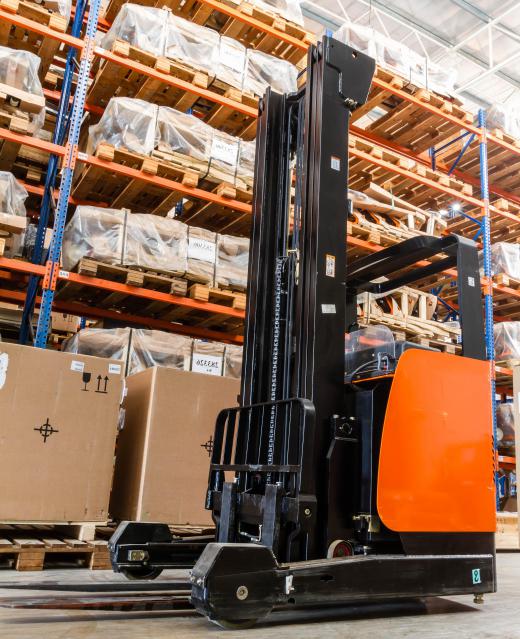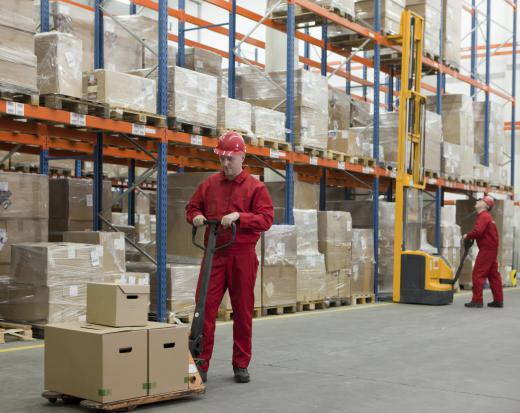A forklift is a piece of machinery which is used to lift and move large loads. There are numerous useful applications for a forklift, and many warehouses, construction sites, and manufacturing facilities have forklifts on hand. There are a number of different types of forklifts, intended to meet various weight limits and consumer needs. Several manufacturers dominate the forklift industry, including Crown and Toyota. Suppliers of heavy machinery usually stock a range of forklifts for consumers in need, both new and used.
The history of the forklift dates back to the 1920s, when several manufacturers began to explore new designs for lifting trucks. The simple design quickly caught on, and with a few refinements, the forklift became a crucial piece of equipment in a wide range of work spaces. Operators are specially trained on forklifts so that they understand the limitations of the device, and the rules of safe and efficient operation. Numerous safety improvements have also been made since the 1920s, including the institution of protected cabs for operators of large forklifts.

The crucial part of a forklift is the pronged attachment which juts out from the device. The prongs are inserted under the load to be lifted and raised above the ground by a mast, which can also be tilted to relocate the center of gravity. Once lifted, the load can be moved to another location by the operator. In most cases, the prongs are located in the front of the forklift. In the case of a sideloader, the prongs protrude from one side.

The smallest type of forklift is actually a hand truck, operated manually with the assistance of hydraulics. A hand truck is designed for moving small to medium loads around a limited space. The operator pumps the truck to raise hydraulic pressure to manipulate the forks, and wheels the truck by hand. The largest type of forklift is a full motorized truck, with a protected cab for the operator and a very large load limit.
Specialized forklift designs include lift trucks designed for very narrow aisles, such as those found in warehouses, and stackers, forklifts specifically designed for stacking goods and pallets. In warehouse stores, slim and lightweight forklifts and lifting trucks may be used by employees to reach products while the store is open. After hours, when customer safety is no longer an issue, larger forklifts may be employed for big projects and stocking.
Ever since she began contributing to the site several years ago, Mary has embraced the exciting challenge of being a About Mechanics researcher and writer. Mary has a liberal arts degree from Goddard College and spends her free time reading, cooking, and exploring the great outdoors.

